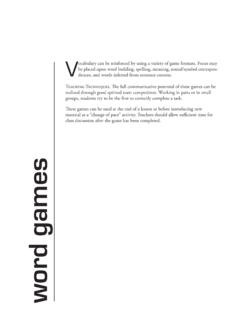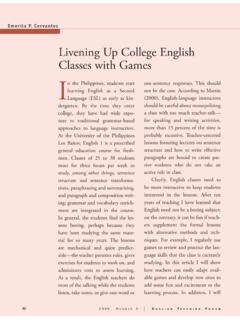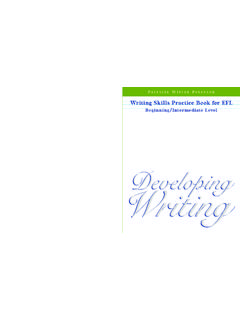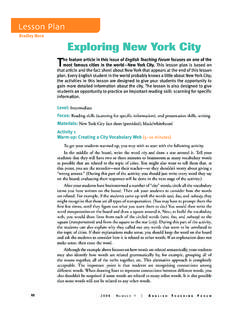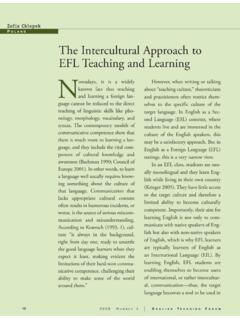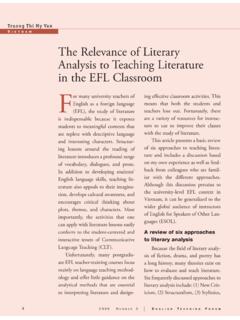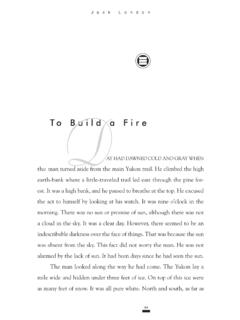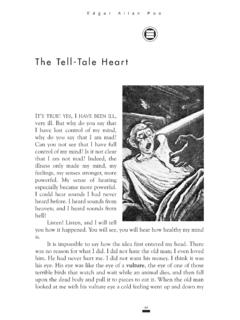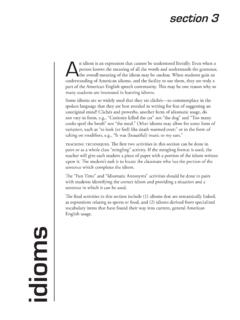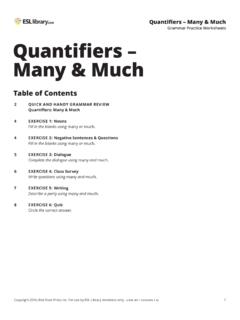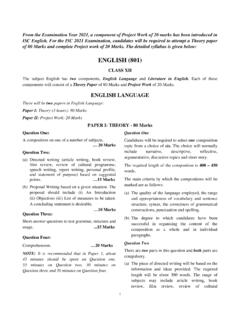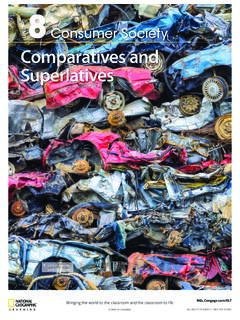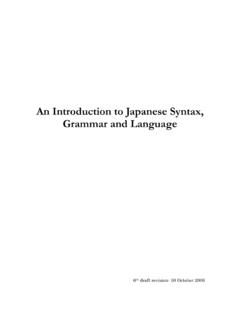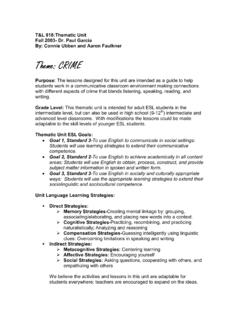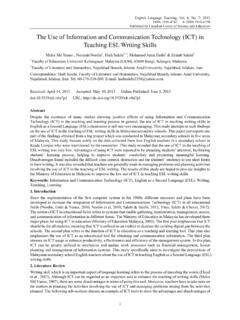Transcription of CHAPTER 4 WHISTLE BLOWING - American English
1 44 CHAPTER 4 WHISTLE BLOWING When an employee discovers unethical, immoral or illegal actions at work, the employee makes a decision about what to do with this information. WHISTLE BLOWING is the term used to define an HPSOR\HH V GHFLVLRQ WR GLVFORVH WKLV LQIRUPDWLRQ WR DQ DXWKRULW\ ILJXUH ERVV PHGLD RU JRYHUQPHQW official). The topic of this CHAPTER is WHISTLE BLOWING . The purpose of this CHAPTER is to help teachers and students to learn more about how employees make their decisions to come forward with potentially damaging information and about how employees identify strong ethical employment environments and, in turn, avoid potentially unethical employers. BACKGROUND INFORMATION WHISTLE BLOWING leads to good and bad results. In this CHAPTER , we will explore both. First, the benefits of carefully considered WHISTLE BLOWING can lead to the end of unethical business practices. The lives of individuals and whole communities have been saved by whistleblowers.
2 Severe damage to the environment has been stopped by the actions of one individual who blew the WHISTLE on an unethical employer. Here are some examples of serious ethical violations that have resulted in WHISTLE BLOWING . These examples represent significant consequences to businesses: x Dumping of toxic waste x Padding an expense report x Violating laws about hiring and firing x Violating laws about workplace safety x Violating health laws which lead to documented illness and even death The actions of whistleblowers are potentially beneficial to society. Businesses that engaged in unethical practices have been shut down because of the actions of whistleblowers. Lives have been saved, and severe damage to the environment has been averted because of the courage and persistence of whistleblowers. At the same time, an employee who witnesses unethical business practices at work may want to think carefully before making the decision to inform an authority of the practice.
3 The consequences of WHISTLE BLOWING are often extreme and include possible firing, civil action, or even imprisonment. Menu 45 Furthermore, an employee may want to follow the rule of "chain of command" that is, begin to discuss issues of WHISTLE BLOWING with his or her immediate supervisor first, before discussing the matter with anyone else. A great deal of information about WHISTLE EORZLQJ ZKLVWOHEORZHU V ULJKWV and protection, whistleblowers in many countries and in many professions (sports, the tobacco industry, chemical industry, and even the government) is available on the Internet. A list of some of those sites, with links to others, appears later in this CHAPTER (see Internet Resources). Company loyalty is an internationally held value.
4 Employees want positive work environments. Most workers do not like to have disagreements with their bosses. At the same time, bosses and managers do not want employees to complain to others in the workplace about a problem that the PDQDJHU PLJKW EH DEOH WR VROYH &RPSODLQLQJ WR RQH V FROOHDJXHV Fan be harmful to morale and should not be confused with careful thinking and action on behalf of unethical business practices. 2QH FRPSDQ\ V XQHWKLFDO SUDFWLFHV ZHUH XQFRYHUHG E\ DQ HPSOR\HH ZKR ZDV ODWHU fired for " BLOWING the WHISTLE ." No employee wants to be branded as having bad judgment. When should an employee blow the WHISTLE ? When should he or she "keep quiet"? Experts have set guidelines for WHISTLE BLOWING . Some of those are listed below. Guidelines for WHISTLE BLOWING This list is a guideline that will help an employee to determine if a situation merits WHISTLE BLOWING . 1. Magnitude of consequences An employee considering WHISTLE BLOWING must ask himself or herself these questions: How much harm has been done or might be done to victims?
5 Will the victims really be "beneficiaries"? If one person is or will be harmed, it is unlikely to be a situation that warrants WHISTLE BLOWING . 2. Probability of effect The probability that the action will actually take place and will cause harm to many people must be considered. An employee should be very sure that the action in question will actually happen. If the employee does not know if the action will happen and if the action will harm people (or the environment), the employee should reconsider his or her plan to blow the WHISTLE . In addition, the employee must have absolute proof that the event will occur and that people (or the environment) will be harmed. 3. Temporal immediacy An employee must consider the length of time between the present and the possibly harmful event. An employee must also consider the urgency of the problem in question. The more immediate the consequences of the potentially unethical practice, the stronger the case for WHISTLE BLOWING .
6 For example, the effects of toxic waste dumping that are likely to occur in a week are more pressing than the firing of 100 employees next year. 4. Proximity The physical closeness of the potential victims must be considered. For example, a company that is depriving workers of medical benefits in a nearby town has a higher proximity than one 1,000 miles away. The question arises about matters of emotional proximity or situations in Menu 46 which the ethical question relates to a victim with some emotional attachment to the whistleblower. 5. Concentration of Effort A person must determine the intensity of the unethical practice or behavior. The question is how much intensity does the specific infraction carry. For example, according to this principle, stealing $1,000 from one person is more unethical than stealing $1 from 1,000 people.
7 CLASSROOM APPLICATIONS ZY WARM UP ACTIVITY (approximately 10- 20 minutes) Objectives To generate student interest in this topic and to introduce new vocabulary and grammar Procedures 1. Introduce the topic by bringing a WHISTLE to class. Now, tell students that today we will address the topic of WHISTLE BLOWING . Write the word WHISTLE BLOWING on the board, and blow your WHISTLE (Note: some teachers will want to omit this step). Ask students if they know what the term means. Solicit guesses. 2. Dictate the definition of WHISTLE BLOWING on page 1 to students. Tell students: You will hear the dictation three times. The first time, I will read the passage at normal speed and you should listen. Do not write during the first reading. The second time I read the passage, I will read in chunks and you should write every word you hear. The third time, I will read again at normal speed. You should check your writing for errors and correct them.
8 You will be given one minute at the end to re- read your writing and make final corrections. Collect the dictation and correct it. 3. Collect the dictations and solicit questions from students on their understanding of the concept of WHISTLE BLOWING . 4. Tell students they are now ready to start learning about WHISTLE BLOWING ..ZY Menu 47 ACTIVITY #1 (approximately 20- 30 minutes) Objectives x To encourage students to think about WHISTLE BLOWING and its ramifications x To solicit student point of view on the topic of WHISTLE BLOWING Procedures 1. Present Appendix B, How To review Your Potential Employer On Ethics. Make copies of Appendix B and pass them out to the students. review student questions about vocabulary and grammar as needed.
9 Use Appendix A, which lists the vocabulary, as needed. 2. Have students complete the form individually. (Note: Doing this step in pairs or small groups is not advised. Students will have difficulty reaching an agreement. Responses do not require consensus.) 3. Ask students to think of a question they might add to the form. 4. Have students answer all questions and discuss their responses in small groups of approximately four students. (Back to Lesson Extensions) ZY ACTIVITY #2 (Approximately 30- 40 minutes) Objectives x To encourage students to think about business ethical issues as they relate WHISTLE BLOWING in their own academic, professional or work contexts x To develop more fluency in using the terms related to WHISTLE BLOWING x To point out the issues that underlie contextual specificity of WHISTLE BLOWING x To gain more comfort and competence in using Internet sources for professional and academic work Procedures 1.
10 Introduce the activity by saying that this activity will provide students with the chance to learn more and be better able to understand the importance of business ethics in WRGD\ V ZRUOG Menu 48 2. Now that you have considered business ethics in terms of your own employment (Appendix A), let us discuss the matter of WHISTLE EORZLQJ LQ VWXGHQWV RZQ experiences. 3. Begin with a short lecture that summarizes the points made in the background information section of this CHAPTER (see Background). 4. Following the summary, the teacher will next ask this question: What experience do you have with WHISTLE BLOWING ? Brainstorm this experience as a whole class for 1- 2 minutes. Then, assign students to work in small groups (3- 5 students).
